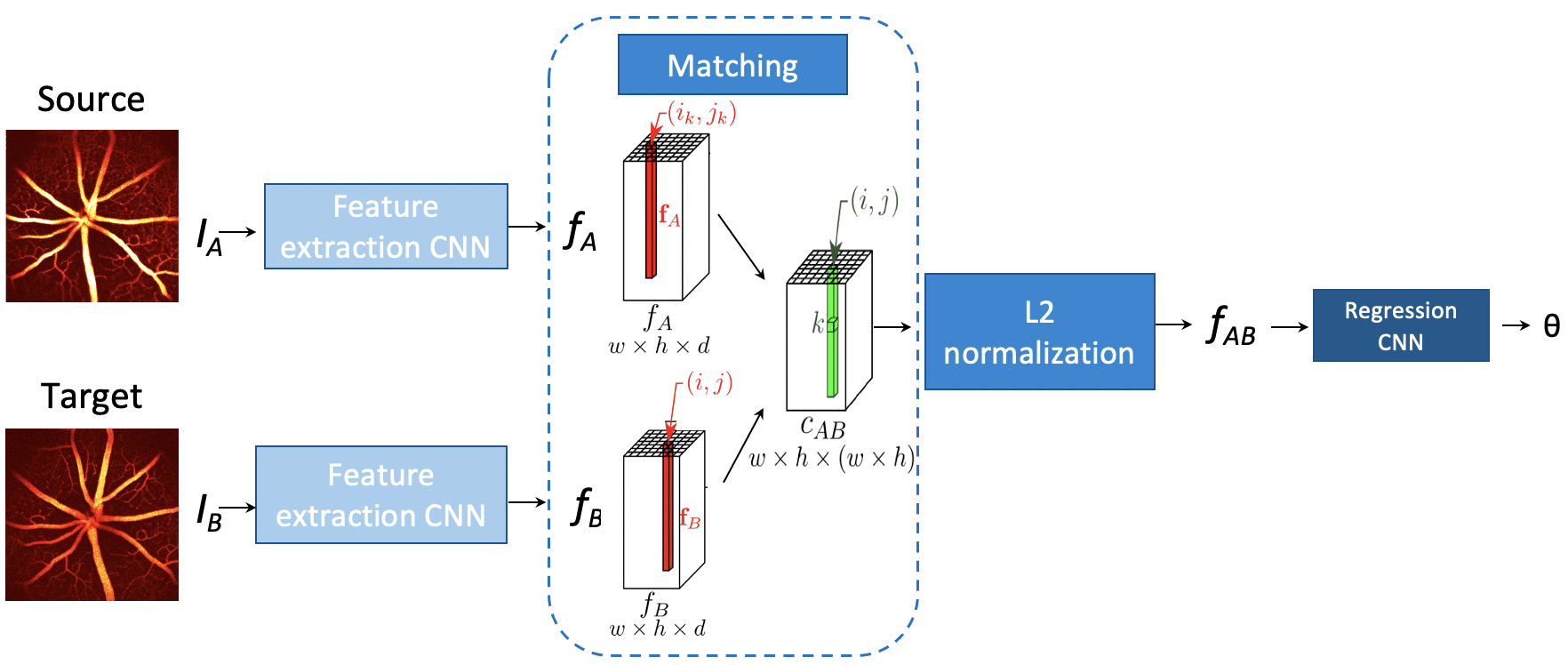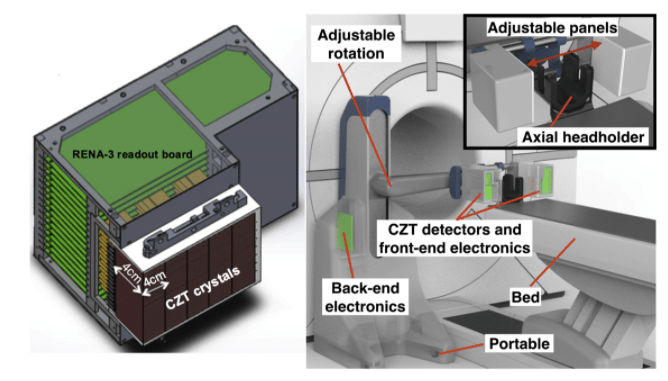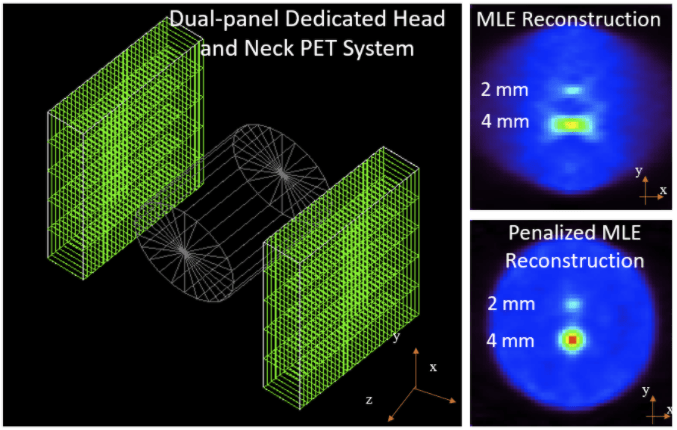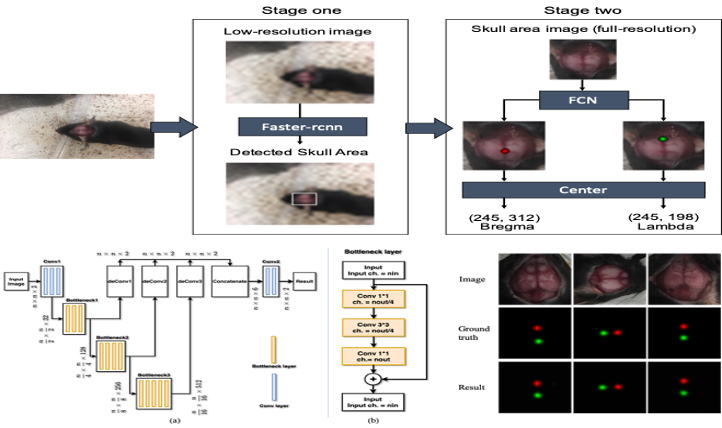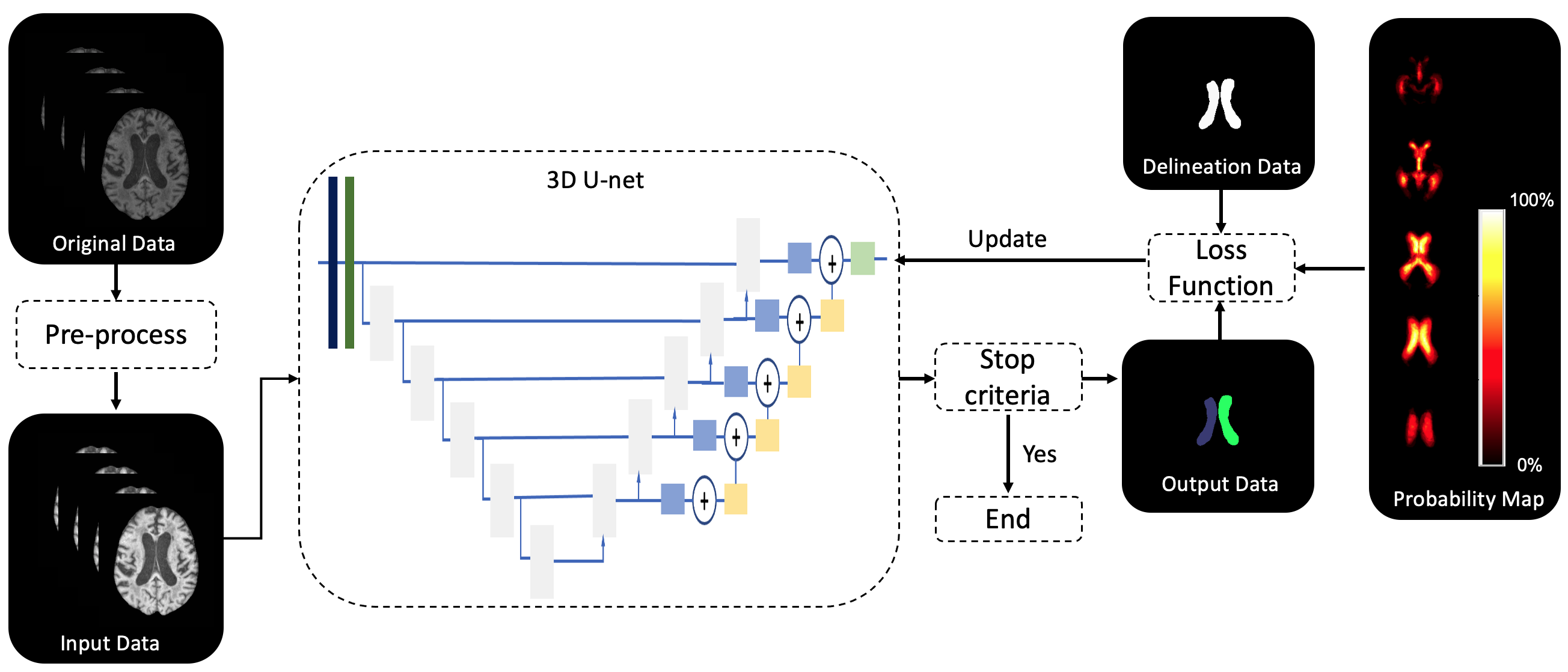
Brain parcellation using deep learning and probability maps: We present a 3D CNN with the U-Net architecture and residual blocks for brain ventricle segmentation in magnetic resonance images. We incorporate probability maps to improve network robustness. We conducted experiments over three cohorts: healthy controls, NPH patients, and NPH patients post surgical intervention with shunt placement. Our method produced results that are significantly better than the state-of-the-art alternatives and was successful with data that has shunt artifacts. [Papers: SPIE Medical Imaging'23; ]

